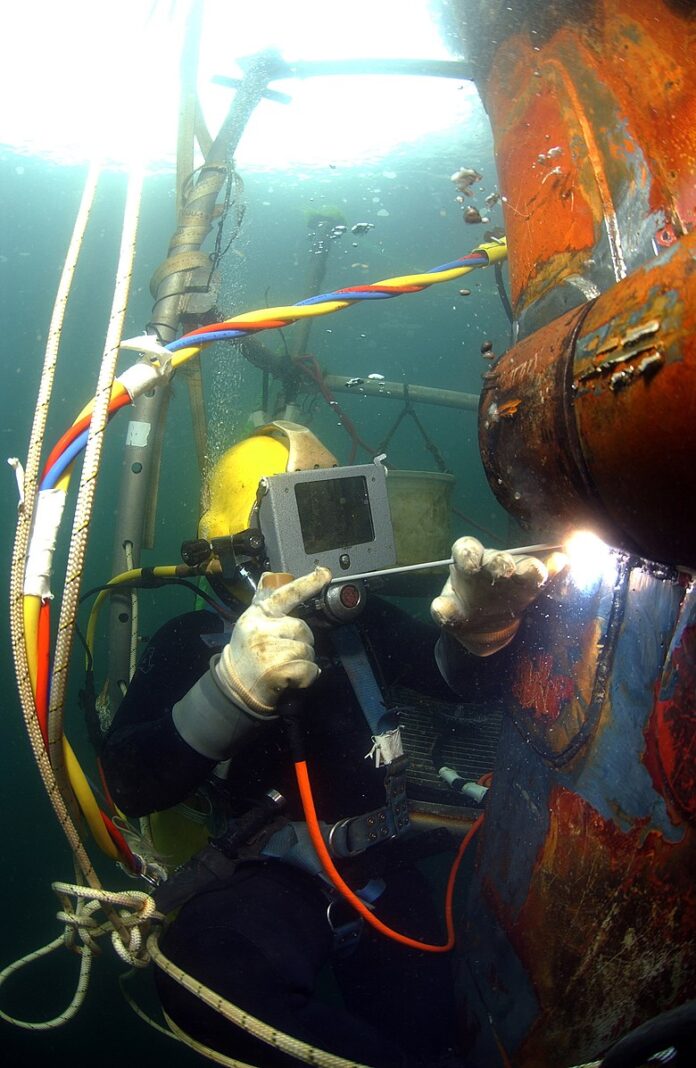Underwater welding was first invented in Russia in 1932 by Konstantin Konstantinovich Khrenov and used in the Soviet navy. During the Second World War, American Cyril D. Jensen, a professor of engineering at Lehigh University, developed the US’s own underwater welding program and created two US patents in this field.
According to TWI, the use of underwater welding was developed to repair offshore oil platforms that may have been damaged by hurricanes or explosions. It is also used to repair underwater pipelines, hulls of steel ships and other harbor work. Underwater welding saves companies millions of dollars each year by repairing steelwork without transporting it to dry land.
Process
According to Welding Consultants, there are three main ways to make an underwater weld. The first is dry surface welding, where an enclosure is built around the area to be repaired and water is sprayed with compressed air until the area has the same pressure as a normal surface weld. The welding is then carried out under normal conditions. The second method also uses an enclosure, but it is filled with helium to push the water out of the area. The welder wears respiratory equipment and completes welding on a dry surface. The third method is wet surface welding, which uses electrode arc welding with a gas mixture that allows the weld line to dry instantly without being affected by water. For this, the welder must also be a qualified scuba diver and use specially designed equipment to prevent electric shock.
Work area
According to AWS, if you want to pursue a career in underwater welding, you need to have qualifications in commercial diving and be proficient in deep water diving specialized commercial diving equipment. You also need to have the DS standard AWS qualification in welding to show that you are a certified welder. With this qualification you can start looking for work in dive centers. However, when you start work, most companies will also require the D3.6 underwater welding specification to prove you can do the job before you start.

